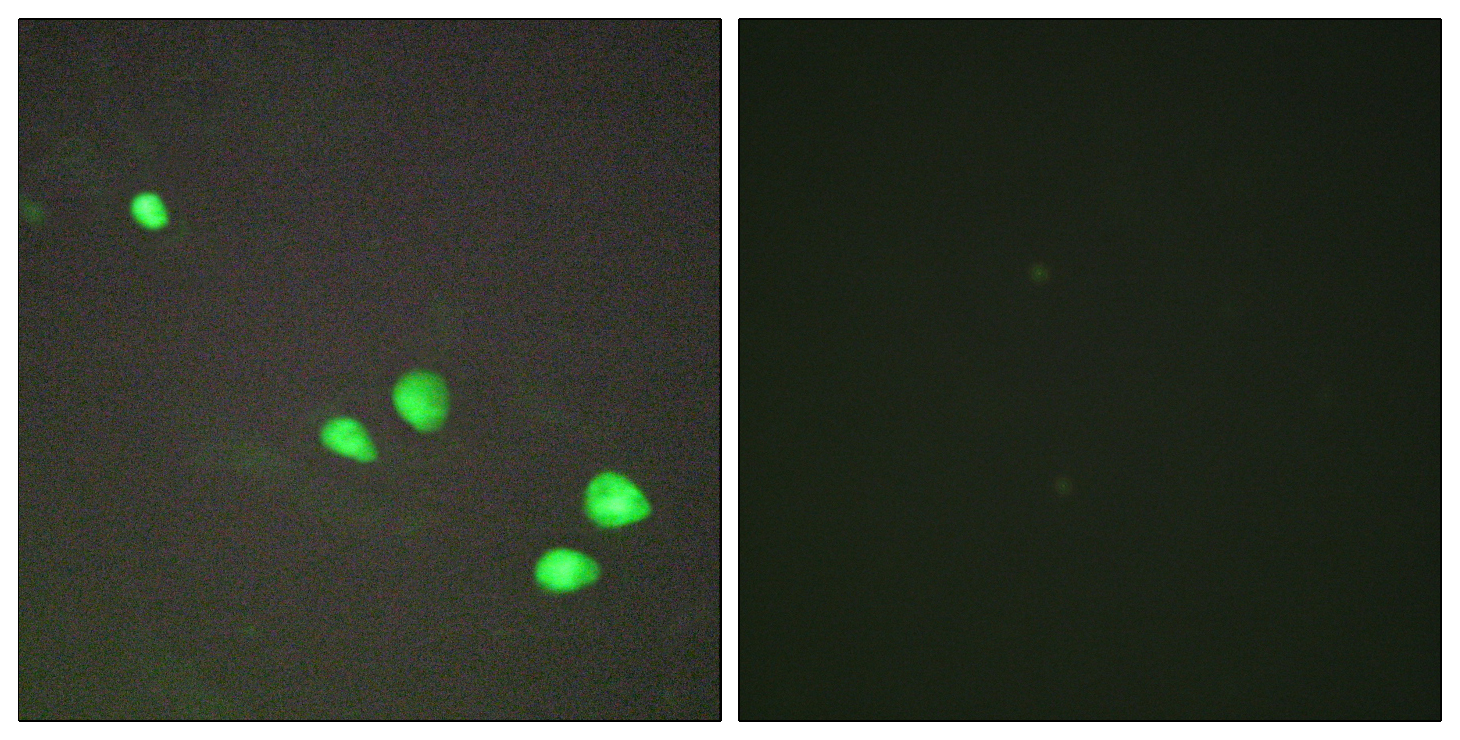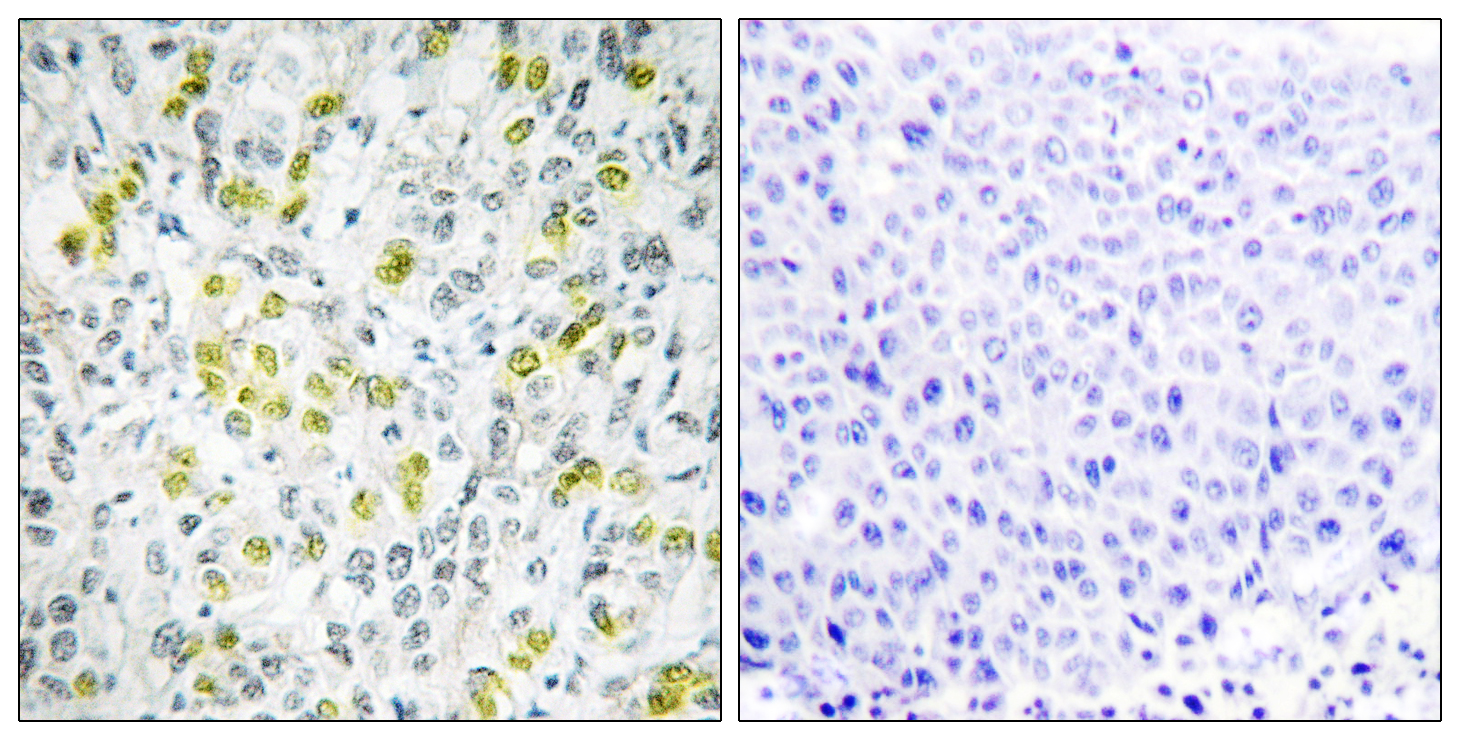Mi2-β Polyclonal Antibody
- Catalog No.:YT2754
- Applications:IHC;IF;ELISA
- Reactivity:Human;Mouse
- Target:
- Mi2-β
- Fields:
- >>Human papillomavirus infection;>>Viral carcinogenesis
- Gene Name:
- CHD4
- Protein Name:
- Chromodomain-helicase-DNA-binding protein 4
- Human Gene Id:
- 1108
- Human Swiss Prot No:
- Q14839
- Mouse Gene Id:
- 107932
- Mouse Swiss Prot No:
- Q6PDQ2
- Immunogen:
- The antiserum was produced against synthesized peptide derived from human CHD4. AA range:571-620
- Specificity:
- Mi2-β Polyclonal Antibody detects endogenous levels of Mi2-β protein.
- Formulation:
- Liquid in PBS containing 50% glycerol, 0.5% BSA and 0.02% sodium azide.
- Source:
- Polyclonal, Rabbit,IgG
- Dilution:
- IHC 1:100 - 1:300. IF 1:200 - 1:1000. ELISA: 1:20000. Not yet tested in other applications.
- Purification:
- The antibody was affinity-purified from rabbit antiserum by affinity-chromatography using epitope-specific immunogen.
- Concentration:
- 1 mg/ml
- Storage Stability:
- -15°C to -25°C/1 year(Do not lower than -25°C)
- Other Name:
- CHD4;Chromodomain-helicase-DNA-binding protein 4;CHD-4;ATP-dependent helicase CHD4;Mi-2 autoantigen 218 kDa protein;Mi2-beta
- Molecular Weight(Da):
- 218kD
- Background:
- The product of this gene belongs to the SNF2/RAD54 helicase family. It represents the main component of the nucleosome remodeling and deacetylase complex and plays an important role in epigenetic transcriptional repression. Patients with dermatomyositis develop antibodies against this protein. Somatic mutations in this gene are associated with serous endometrial tumors. Alternative splicing results in multiple transcript variants encoding different isoforms. [provided by RefSeq, Jul 2014],
- Function:
- disease:One of the main antigens reacting with anti-MI-2 positive sera of dermatomyositis.,function:Probable transcription regulator.,PTM:Phosphorylated upon DNA damage, probably by ATM or ATR.,similarity:Belongs to the SNF2/RAD54 helicase family.,similarity:Contains 1 helicase ATP-binding domain.,similarity:Contains 1 helicase C-terminal domain.,similarity:Contains 2 chromo domains.,similarity:Contains 2 PHD-type zinc fingers.,subunit:Central component of the nucleosome remodeling and histone deacetylase (NuRD) repressor complex. Interacts with TRIM27. Part of a complex containing ATR and HDAC2. Interacts with KLF1; the interaction depends on sumoylation of KLF1, and leads to its transcriptional repression.,
- Subcellular Location:
- Nucleus . Cytoplasm, cytoskeleton, microtubule organizing center, centrosome . Associates with centrosomes in interphase. .
- Expression:
- Epithelium,Pancreas,Skin,Uterus,
- June 19-2018
- WESTERN IMMUNOBLOTTING PROTOCOL
- June 19-2018
- IMMUNOHISTOCHEMISTRY-PARAFFIN PROTOCOL
- June 19-2018
- IMMUNOFLUORESCENCE PROTOCOL
- September 08-2020
- FLOW-CYTOMEYRT-PROTOCOL
- May 20-2022
- Cell-Based ELISA│解您多样本WB检测之困扰
- July 13-2018
- CELL-BASED-ELISA-PROTOCOL-FOR-ACETYL-PROTEIN
- July 13-2018
- CELL-BASED-ELISA-PROTOCOL-FOR-PHOSPHO-PROTEIN
- July 13-2018
- Antibody-FAQs
- Products Images

- Immunofluorescence analysis of HepG2 cells, using CHD4 Antibody. The picture on the right is blocked with the synthesized peptide.

- Immunohistochemistry analysis of paraffin-embedded human liver carcinoma tissue, using CHD4 Antibody. The picture on the right is blocked with the synthesized peptide.



